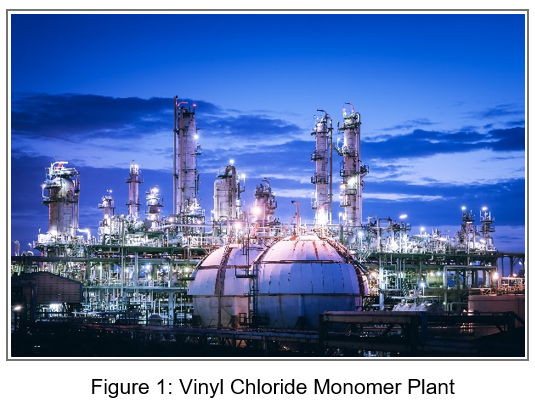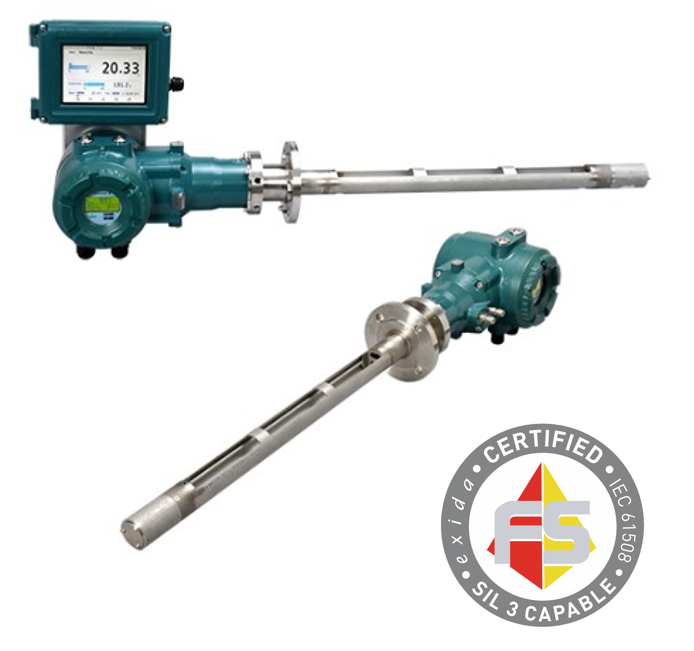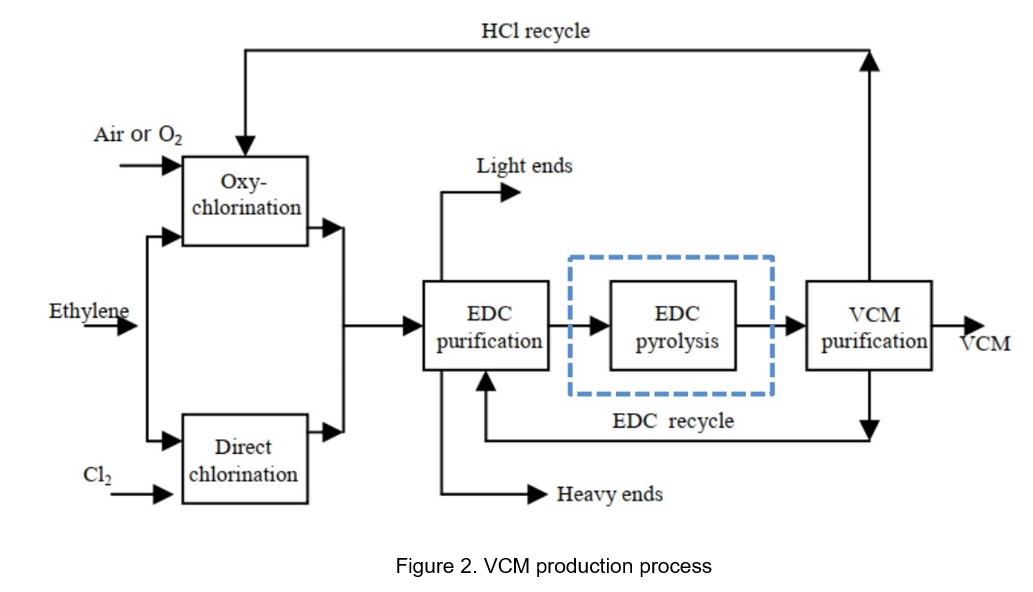Yokogawa’s Tunable Diode Laser Spectroscopy (TDLS) is the ideal solution for both oxygen and carbon monoxide measurements in process furnaces that have aggressive and corrosive components.
Introduction

Approximately 13 billion kilograms of VCM are produced globally with roughly 95% of VCM processes using ethylene as the feed stock. The VCM production process consists of 5 main steps: Oxy-chlorination, Direct chlorination, EDC purification, EDC pyrolysis, and VCM purification. Direct chlorination and oxychlorination generate EDC that is cracked under intense conditions to produce VCM which is then purified. When heated to 500°C at 15-30 atm (1.5 to 3 MPa), EDC vapor decomposes to produce vinyl chloride and anhydrous HCl.
The thermal cracking reaction, also known as pyrolysis, is highly endothermic and is carried out in a process furnace. The EDC flows in tubes throughout the furnace to allow the reaction to reach the desired temperature. The EDC reaction has a relatively low conversion rate at 50-60% and produces numerous chlorinated hydrocarbon byproducts. It is crucial to provide continuous and reliable oxygen measurements to closely monitor and control the combustion in the furnace. Improvements in combustion monitoring and control reduce both energy costs/fuel usage, maximize yield, and increase operational safety.
Challenges
In the EDC pyrolysis furnace, oxygen is measured to provide efficient and safe control of the furnace. Conventional oxygen measurements in pyrolysis furnaces are made with electrochemical analyzers such as zirconium oxide analyzers. These traditional analyzers are typically cost-effective and efficient methods of oxygen measurement, but in this application, they fall short. The halogenated hydrocarbons will corrode and poison the electrochemical cell, increasing the costs and time associated with maintenance, eventually leading to premature analyzer failure.
Solution
Yokogawa’s TDLS8100 probe style analyzer operates on the principle of Tunable Diode Laser Spectroscopy (TDLS) and uses near-infrared (NIR) light to make process gas measurements. The TDLS8100 is an ideal solution for both oxygen and carbon monoxide measurements in process furnaces that have aggressive and corrosive components. The analyzer sensor is not in direct contact with the process and provides < 5-second response all while reducing time and costs associated with regular maintenance. The single flange entry allows direct replacement of conventional oxygen analyzers.
 Recommendation
Recommendation
TDLS8100 In-situ Gas Analyzer
Key Benefits
- Isolation from aggressive process components improves measurement reliability.
- Lower maintenance due to no calibration, no consumables, and virtually no drift.
- Single-flange design expands installation flexibility
- SIL 3 Capable reduces need for additional measurements in critical safety applications.
Related Industries
-
Chemical
Chemical plants rely on continuous and batch production processes, each posing different requirements for a control system. A continuous process calls for a robust and stable control system that will not fail and cause the shutdown of a production line, whereas the emphasis with a batch process is on having a control system that allows great flexibility in making adjustments to formulas, procedures, and the like. Both kinds of systems need to be managed in available quality history of product, and to be able to execute non-routine operations. With its extensive product portfolio, experienced systems engineers, and global sales and service network, Yokogawa has a solution for every plant process.
Related Products & Solutions
-
Gas Analyzers
Enhance efficiency and product quality with real-time analysis
-
Probe Style Tunable Diode Laser Spectrometer TDLS8200
Measure oxygen, CO, and methane in a single-flange, explosion-proof device
-
Tunable Diode Laser Spectrometers
Increase throughput and safety
Have Questions?
Contact a Yokogawa Expert to learn how we can help you solve your challenges.
